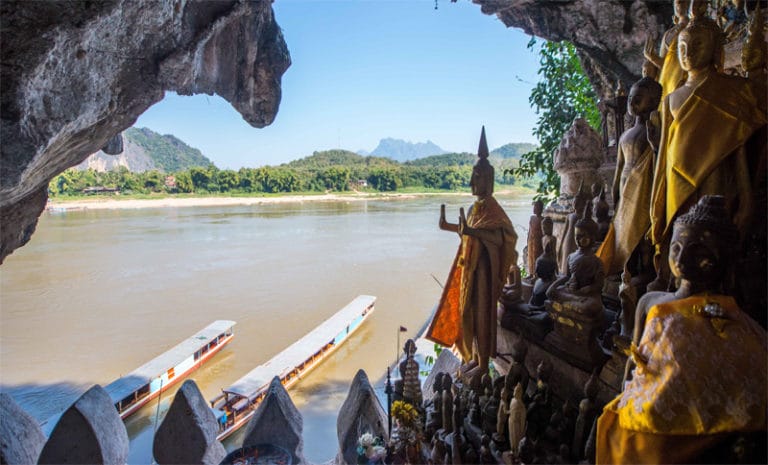A river excursion to the Pak Ou Buddha Caves, 25km north of Luang Prabang at the confluence of the Mekong and Nam Ou rivers, is one of the best quick trips you can make out of the city. Numerous caves punctuate the limestone cliffs on both sides of the Mekong in this vicinity, but the two “Buddha Caves” of Tham Ting and Tham Phoum are the best known. These caves have been used for centuries as a repository for old Buddha images that can no longer be venerated on an altar, either because they are damaged to the point of disfigurement – termite holes, burn marks and broken limbs being afflictions common to wooden Buddhas – or simply because newer images have crowded them out.

In former times, before the caves became a tourist attraction, the inhabitants of Luang Prabang didn’t give much thought to the caves or their contents except during Laos New Year, when boatloads of townsfolk would make the pilgrimage upriver and ritually bathe the semi-abandoned Buddhas to gain merit. The practice survives to this day and is worth seeing if you happen to be around. If not, the caves still deserve an hour or so, if only to gaze at the eerie scene of hundreds upon hundreds of serenely smiling images covered in dust and cobwebs. Tham Ting, the lower cave, just above the water’s surface, is more of a large grotto and is light enough to explore without an artificial light source. The upper cave is unlit, so bring a torch.
Opposite the Buddha Caves on the far side of the Mekong is the “mouth” of the “Ou” River – “Pak Ou” in Laos. The scenery here at the entrance of the Nam Ou is dramatic, with a huge limestone peak rising up over the junction of the two rivers. South of Pak Ou, on the banks of the Mekong, is a village that produced stoneware jars for thousands of years, but has now forsaken that activity, having found that distilling liquor is more lucrative. The inhabitants of Ban Xang Hai, referred to by local boatmen as the “Whisky Village”, are quite used to thirsty visitors stopping by for a pull on the bamboo straw. The liquor is lào-láo, made from fermented sticky rice, and pots filled with the hooch are lined up on the beach awaiting transport up or down the river.
As it’s logical to see the Pak Ou Caves and the Whisky Village on the same trip, most boatmen hired in Luang Prabang are happy to treat it as a package, assuming that after you’ve seen a cave-full of Buddhas you’ll be ready for a good, stiff drink. Boatmen congregate throughout the day near the slow boat landing and at the tip of the peninsula near Wat Xieng Thong.






